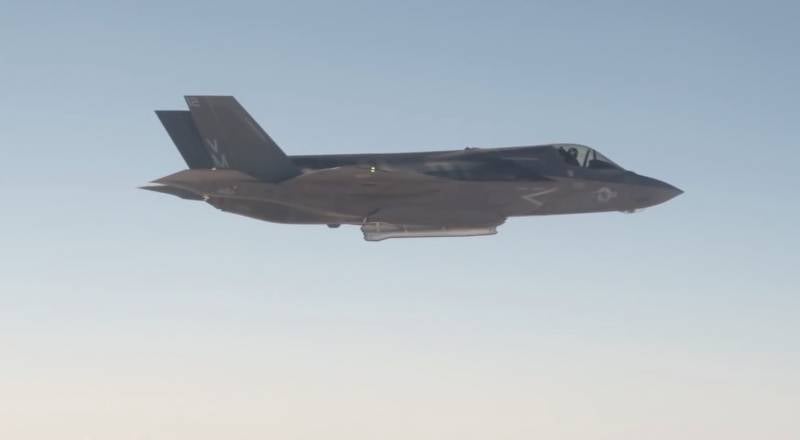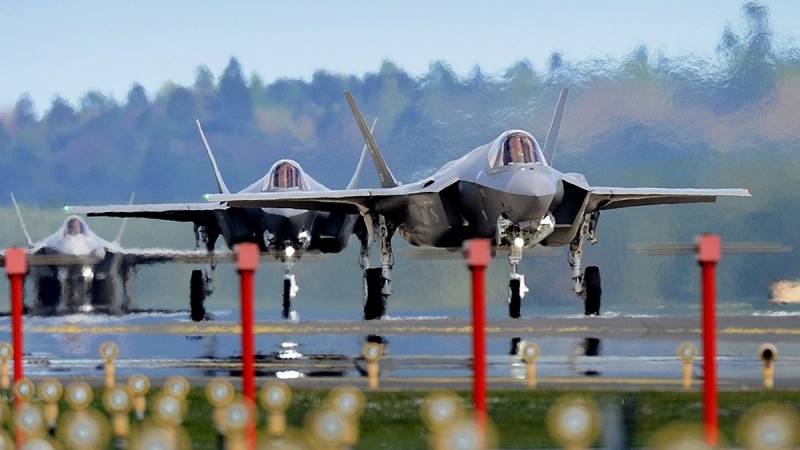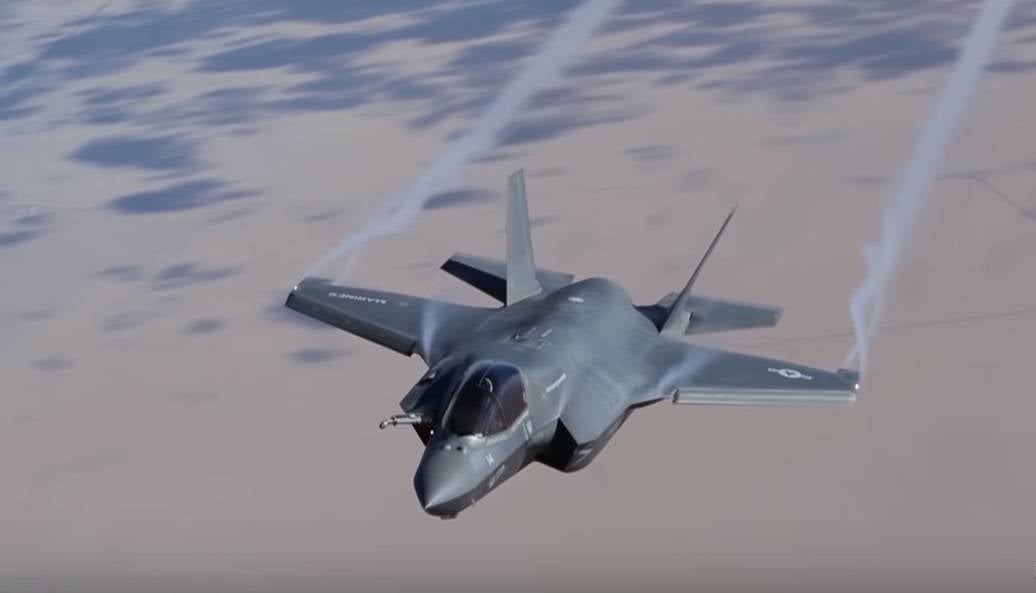High intensity flaking of F-35 stealth coatingAircraft F-35 have serious problems with combat readiness. A report from one of the relevant US ministries claims that 30 percent of the time machines are on the ground for reasons related to the lack of spare parts and special materials.

The government's accountability office, which released a report on the state of the JFS program, paints a sad picture of the organizational chart for maintaining low profile fighters. The maintenance of combat readiness of fighters suffers because of delays in the supply of spare parts, and the situation is probably worsening.
In general, the combat readiness of the fleet of subtle fighters from May to November 2018 reached 50 percent for all versions of the F-35. 29.7% is the percentage of time that aircraft could not take to the air due to the problem described above. In the remaining periods, the figure decreased, but very little - up to 20 percent.
"The supply chain of the F-35 does not have enough spare parts to keep the aircraft in flight for the time needed to meet the combat readiness requirements."
- the document says.
The situation is worseningThe situation is worsening if we take into account the possible termination of the F-35 contract with Turkey. Ankara manufactures elements of the fuselage and displays, hatches of internal armament compartments and many other elements. None of these elements is extremely important, but in the event of a cessation of supplies, the Pentagon will have to increase production from other suppliers or look for new contractors in order to fill the shortage of products. This can both delay deliveries and chain to the ground even more aircraft.
The US military has a task, designated by Jim Mattis when he was his secretary of defense, to bring the F-35 to 80% of its combat readiness by the end of 2019. The data from the report show that this goal is still far away.
The combat readiness of fighters in the United States Air Force is measured according to several criteria. One of them is how many squadron aircraft can perform at least one of their missions. The intermediate task was to achieve 60 percent readiness. Reach it failed.
When assessing the criterion of full combat readiness - that is, the aircraft is able to perform all its combat missions - the results were even worse. Only 2 percent of the F-35C achieved the desired state, with the F-35B the situation was only slightly better - 16%, and only the F-35A approached the goal, but less than half: in tests, he received 34 percent.
The administration is extremely skeptical about the likelihood of achieving a goal of 80 percent primary readiness and even more critical of the plans of the Ministry of Defense for the purchase of spare parts in the coming years.
According to the department, the number of spare parts, although indicated for the nominal figure of 80 percent of primary readiness, but in reality will give at best the opportunity to reach the figure of 70%, since the purchase of parts does not take into account aircraft for long-term maintenance.
At the moment, the backlog from the schedule in the logistics of the supply of parts is approximately 4,300 pieces.
 Logistics system does not work
Logistics system does not workEspecially in order to avoid such problems has been developed autonomous logistics information system F-35 - ALIS. It is designed to track parts and automate the process of creating and speeding up work orders. However, it does not work as it should. The ALIS subsystems do not interact with each other properly, therefore, “manual” control is still required.
Coating problemsAmong other things, some of the details do not correspond to the initially stated parameters. For example, a stealth coating exfoliates at an increased rate, which creates an increased demand for these parts. It is the exfoliation of the stealth coverage with an intensity that was not originally planned that leads to the fact that for a number of squadrons the supplies have stalled. Dozens of aircraft of the new generation are forced to stand in hangars and expect recovery.
The situation reached such a critical state that the squadrons had to be engaged in extracting spare parts from one aircraft and installing them on others. This practice has created several problems at once, and one of them is that there is a real amount of lack of detail. In addition, as it turned out this practice caused the deterioration of the flight characteristics.
Meanwhile, Lockheed Martin reports on improving the situation and claims that it has taken key steps to improve the logistics system and the availability of parts, stressing that some squadrons still reached 70 percent alert.
"Our goal is to further reduce costs to $ 25,000 per flight hour, which will be comparable to the cost of previous generation aircraft."
- said the company.
https://translate.yandex.com/translate?url=https%3A%2F%2Ftopwar.ru%2F157323-f-35-okazalis-prikovany-k-zemle-iz-za-nehvatki-zapchastej.html&lang=ru-en









